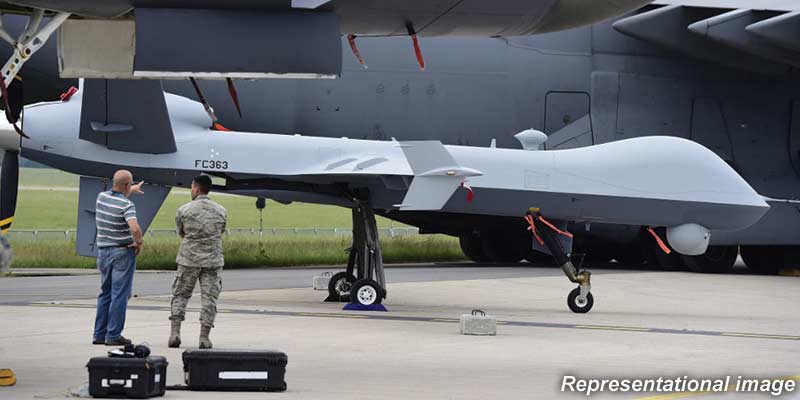- India
- Jul 30
- Kevin Savio Antony
India to build UAVs under $3.1 billion Predator drone deal with US
• As part of the $3.1 billion 31 MQ-9B Predator drone deal, the US side is proposing to provide consultancy to Indian entities for developing an indigenous advanced unmanned aerial vehicle.
• India and the US have been holding discussions for the drone deal for the last few years, under which the three services will get 31 drones.
• The American offer to provide consultancy to Indian entities for developing an advanced Indian drone as part of the project is expected to be taken up for discussion and clearance at the Defence Acquisition Council meeting scheduled to be held.
• The MQ-9B drones are planned to be deployed at four places, including INS Rajaji near Chennai and Porbandar in Gujarat, by the Indian Navy, while the other two services will keep them jointly at two bases in Sarsawa and Gorakhpur in Uttar Pradesh at Air Force bases due to long runway requirements.
What is MQ-9B Predator?
• The MQ-9B is an armed Unmanned Aerial Vehicle (UAV) developed by General Atomics Aeronautical Systems (GA-ASI).
• It is designed for the United States Air Force (USAF) but is also used by other countries.
• The UAV supports remotely controlled or autonomous flight operations.
Variants:
• Sky Guardian
• Sea Guardian: Operational with the Indian Navy since 2020.
Primary Uses:
• Surveillance
• Intelligence gathering
• Air strikes
Features:
• Payload: Can carry up to 5,670 kg.
• Fuel Capacity: 2,721 kg.
• Operating Altitude: Exceeds 40,000 feet.
• Low-Altitude Operation: Can fly as low as 250 meters from the ground, remaining undetected unless visually spotted.
• Endurance: Up to 40 hours of continuous flight, ideal for prolonged surveillance.
• Speed: Top speed of 442 km/h.
• Armament: Equipped with four Hellfire missiles and up to 450 kg of bombs for high-precision strikes.
• Versatility: Suitable for land and maritime surveillance, anti-submarine warfare, anti-surface warfare, electronic warfare, and expeditionary missions.
• Automatic Operations: Capable of automatic take-offs and landings for greater operational flexibility.
• Integration into Civil Airspace: Can safely operate in civil airspace, providing real-time situational awareness for joint forces and civil authorities in maritime domains, day or night.
(The author is a trainer for Civil Services aspirants.)

